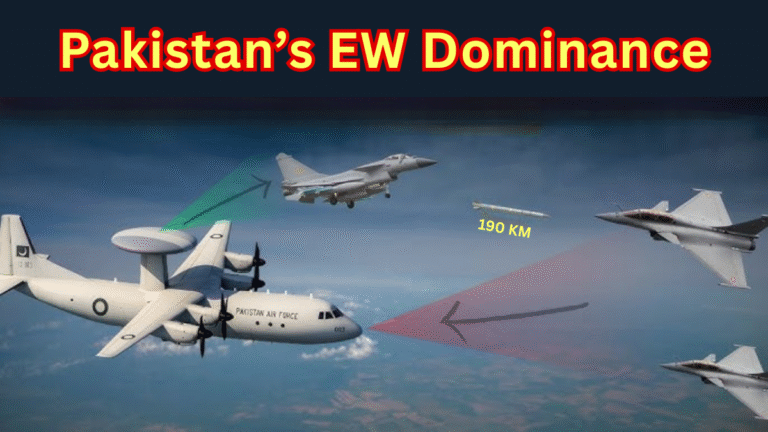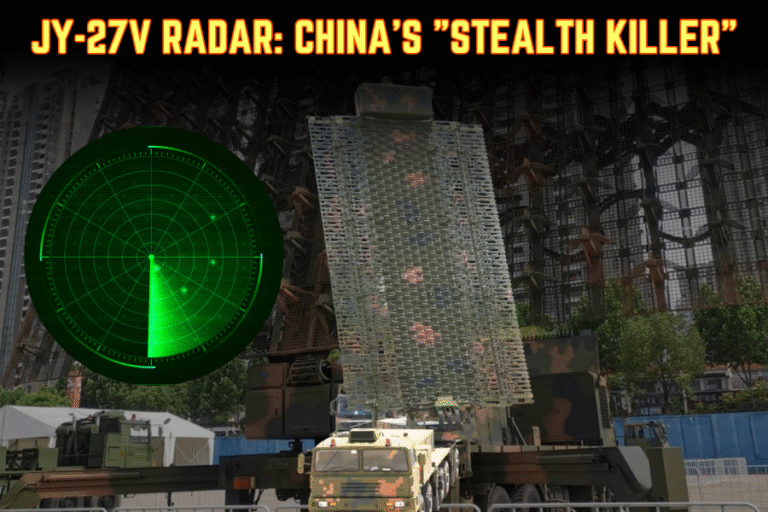(By Khalid Masood)
China’s rapid advancements in laser-based directed-energy weapons (DEWs) have positioned the People’s Liberation Army (PLA) at the forefront of modern warfare innovation. From countering drone swarms to enhancing anti-access/area-denial (A2/AD) strategies, China’s laser arsenal—developed primarily by the China Aerospace Science and Industry Corporation (CASIC) and other state-owned enterprises—offers precision, cost-effectiveness, and scalability. Systems like the Light Arrow, Sky Shield, Silent Hunter, LW-30, LW-60, and tactical laser dazzlers, bolstered by breakthroughs in cooling technology, demonstrate China’s ambition to dominate the electromagnetic battlefield. As of June 2025, these platforms are not only deployed domestically but also exported to allies like Iran and Russia, reshaping regional security dynamics. This article explores China’s laser weapon systems, their technical capabilities, battlefield applications, and strategic implications, drawing on recent developments and global comparisons.
Introduction: A New Era of Directed-Energy Warfare
Laser weapons, once relegated to science fiction, are now a cornerstone of China’s military modernization. With a focus on countering unmanned aerial systems (UAS), missiles, and sensors, the PLA has developed a diverse portfolio of laser platforms, ranging from vehicle-mounted high-energy systems to man-portable dazzlers. Unveiled systems like the Light Arrow and Sky Shield series, alongside established platforms like Silent Hunter, showcase China’s integration of artificial intelligence (AI), advanced cooling, and networked command architectures. Breakthroughs in heat dissipation, reported in 2023, allow indefinite firing, addressing a historic limitation of laser weapons. Exported to conflict zones like Ukraine and the Middle East, these systems are battle-tested, amplifying China’s influence. As drone warfare proliferates and cyber threats escalate, China’s laser revolution threatens to redefine power projection, challenging Western dominance in precision warfare.
Light Arrow and Sky Shield Series: Countering Drone Swarms
In November 2024, CASIC unveiled the Light Arrow and Sky Shield laser series, designed to neutralize low-altitude, slow, and small (LSS) UAS and loitering munitions. The series includes:
- Light Arrow-11E: A multi-mode terminal interference system mounted on a Dongfeng 6×6 chassis, detecting targets across visible, infrared, and millimeter-wave spectra. It offers enhanced mobility and a spectral range surpassing older systems like LW-30, ideal for terminal air defence.
- Light Arrow-21: Equipped with phased-array radar, it detects targets at over 8 kilometers and engages within seconds, likely operating at 30 kW or higher. Its rapid tracking suits dynamic battlefields.
- Light Arrow-24: An unmanned, AI-driven laser system for autonomous defence, integrating with CASIC’s WarLinkz Cloud for networked operations, akin to the U.S. Integrated Battle Command System (IBCS).
- Sky Shield-A: A modular, man-portable suite for individual soldiers, combining laser and electronic countermeasures. It provides early warning and interdiction against LSS UAS, customizable for urban or field environments.
Battlefield Application: These systems form an integrated counter-UAS “system of systems,” enhancing China’s A2/AD capabilities. They protect critical infrastructure and maneuver units from drone swarms, as seen in the Russia-Ukraine conflict, where low-cost UAS overwhelm traditional defences. Networked via WarLinkz Cloud, they enable real-time data sharing, making them scalable for both fixed and mobile defence. Their cost-effectiveness—$2 per shot versus $50,000 for missiles—offers a strategic edge against attritional aerial threats.
Silent Hunter: A Global Anti-Drone Benchmark
The Silent Hunter, an electrically powered fiber-optic laser, delivers 30 to 100 kW with a 4-kilometer range, penetrating 10 mm of steel at 800 meters or 5 mm at 1,000 meters. Mounted on SUVs or trucks, it has been deployed by the PLA since 2016, securing events like the G-20 Summit in Hangzhou. Exported to Saudi Arabia (eight units) and Iran, and recently spotted in Russia’s Ukraine campaign, Silent Hunter is a proven anti-drone platform.
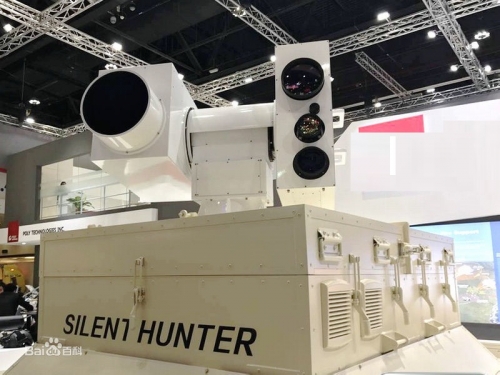
Battlefield Application: Silent Hunter excels in protecting high-value assets—airbases, command centers, or urban infrastructure—from LSS drones and missiles. Its mobility allows rapid response, while its power scalability targets diverse threats, from Houthi drones in Saudi Arabia to Ukrainian UAS in Donbas. Its deployment in Tehran in October 2024, possibly as the Shen Nung variant, countered Israeli drone strikes with a 99% interception rate though such figures require scrutiny. Its bulk precludes airborne use, but its ground-based efficacy is unmatched.
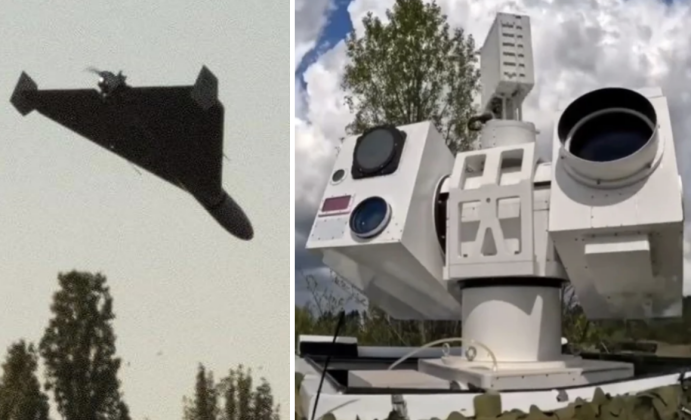
LW-30 and LW-60: AI-Driven Air Defence
The LW-30 and LW-60, showcased at Airshow China 2022, are vehicle-mounted lasers with AI-driven automation, mounted on 6×6 Wanshan WS2250 trucks. The LW-30, with a 30 kW output and 25-kilometer range, locks targets in 6 seconds and intercepts over 30 in tests. The LW-60, likely 60 kW, enhances power for larger threats. Both integrate radar, command, and support vehicles, forming a networked air defence grid.
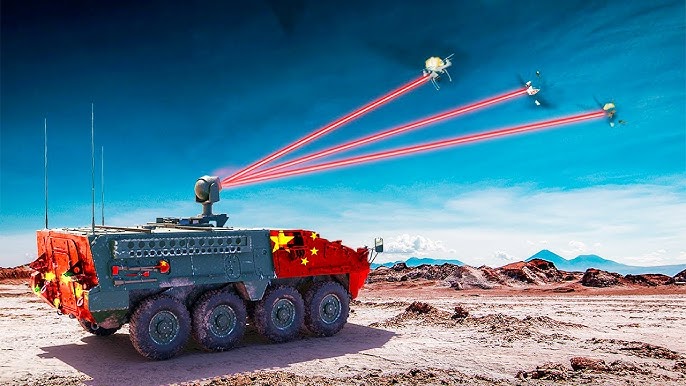
LW-30
Battlefield Application: These systems counter LSS targets—drones, guided bombs, and mortars—at altitudes below 1 kilometer and speeds under 200 km/h. Their high mobility suits China’s South China Sea islands or Himalayan plateaus, defending against tactical reconnaissance or terrorist UAS. Integrated with WarLinkz Cloud, they enable joint operations, mirroring U.S. HELWS but with greater autonomy. Their rapid engagement and low cost per shot make them ideal for sustained air defence, reducing reliance on costly missiles.
LW-60
High-Energy Lasers with Breakthrough Cooling Systems
In August 2023, researchers at the National University of Defence Technology unveiled a gas-pumping cooling system that eliminates heat buildup, allowing continuous laser operation. This “huge breakthrough,” per scientist Yuan Shengfu, enables indefinite firing without beam degradation, surpassing U.S. systems like HELIOS, which face cooling challenges. Applied to systems like LW-30 and Shen Nung 3000/5000, this technology enhances range and lethality.
Battlefield Application: Continuous-fire lasers transform engagements, enabling prolonged defence against missile salvos or drone swarms. They can disable enemy communications, sensors, or satellites, supporting China’s A2/AD bubble in the Taiwan Strait or South China Sea. By reducing maintenance and improving precision, these systems offer a cost-effective alternative to kinetic interceptors, potentially altering the economics of air defence.
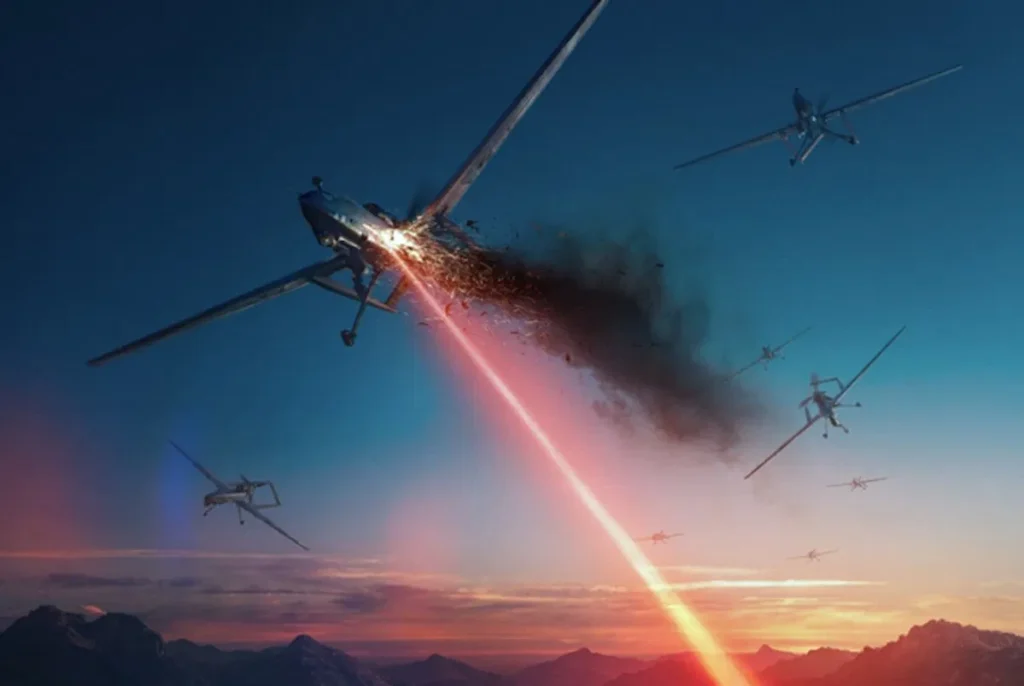
Tactical Laser Weapons and Individual Dazzlers
China’s tactical laser arsenal includes short-range systems like Low Altitude Guard I/II, Guorong-I Anti-Drone System, and High Shield Optoelectronic Defence System, targeting LSS UAS and missiles. Individual dazzlers—BBQ-905, WJG-2002, PY132A, PY131A, and WJ-1-050—disable enemy sensors or cause temporary blindness, adhering to the UN Protocol on Blinding Laser Weapons, which bans permanent eye damage. The ZKZM-500 rifle, with a 2,600-foot range, ignites clothing or downs small drones, weighing 6 pounds with a 1,000-shot lithium battery.
Battlefield Application: These systems enhance layered defence, with vehicle-based lasers protecting bases and dazzlers equipping infantry. Dazzlers disrupt enemy electro-optical devices—tank rangefinders, drone cameras—or disorient combatants, sowing chaos without violating international law. The ZKZM-500, though less lethal, supports counterterrorism by igniting fuel or disabling UAS, ideal for urban operations or border skirmishes.
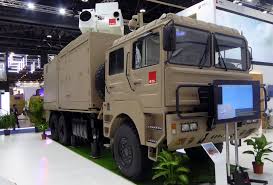
Emerging Systems: OW5-A10 and Airborne Lasers
In June 2025, a new laser system, export-named OW5-A10, was spotted on a Dongfeng Mengshi chassis, designed for low-flying drone swarms. Likely a Silent Hunter derivative, it emphasizes mobility and high power, though specifications remain classified. Additionally, CASIC is developing airborne laser pods, per a 2021 procurement notice, to intercept missiles or aircraft, though technical challenges like power supply persist.
Battlefield Application: The OW5-A10 enhances PLA maneuver units, protecting armored columns or forward bases from UAS. Airborne lasers, if realized, could extend China’s A2/AD to aerial dogfights or missile defence, countering U.S. F-35s or hypersonic threats. These systems signal China’s ambition to dominate multi-domain warfare, from ground to air.
Strategic Implications: Global Reach and Challenges
China’s laser weapons, exported to Iran, Saudi Arabia, and Russia, amplify its geopolitical influence. Iran’s Shen Nung deployment in Tehran and Russia’s Silent Hunter use in Ukraine demonstrate battle-tested reliability though exaggerated claims (e.g., 99% interception) warrant skepticism. Compared to U.S. systems like HELIOS (60-150 kW) or Israel’s Iron Beam, China’s lasers excel in mobility and cost but lag in high-power applications like missile defence. Environmental limitations—fog, rain, or smoke—attenuate beams, and high power demands challenge mobile platforms.
Battlefield Application: China’s lasers strengthen its A2/AD strategy, deterring U.S. carrier groups in the Taiwan Strait or Indian forces along the LAC. Exports counter Western influence in the Middle East and Eurasia, while domestic deployments secure strategic assets. However, reliance on AI and networked systems risks cyber vulnerabilities, and international scrutiny over dazzlers’ ethical use persists.
Future Trends: Space and Strategic Lasers
China’s ambitions extend to strategic lasers, with ground-based systems targeting satellites, as noted in the Pentagon’s 2022 China Military Power Report. A 2018 proposal from the Air Force Engineering University suggested orbital laser stations to clear space debris, hinting at dual-use anti-satellite capabilities. CASIC’s work on compact, high-power lasers promises serialized production for diverse scenarios, per the China Academy of Engineering Physics.
Battlefield Application: Space-based lasers could disrupt U.S. GPS or reconnaissance satellites, critical for precision strikes, while ground systems blind adversary sensors. These align with China’s counter-intervention doctrine, aiming to neutralize technological advantages in a Taiwan or South China Sea conflict. However, technical hurdles—power scaling, beam stability—limit near-term deployment.
Conclusion: A Laser-Powered PLA
China’s laser weapons, from the Light Arrow to Silent Hunter, represent a paradigm shift in warfare, blending speed, precision, and economy. Breakthroughs in cooling and AI integration position the PLA to counter emerging threats like drone swarms and hypersonic missiles, while exports expand China’s strategic footprint. Yet, environmental, technical, and ethical challenges temper their transformative potential. As the U.S., Israel, and others advance their DEWs, China’s laser revolution underscores a global arms race, with the PLA poised to shape the electromagnetic battlefield. Whether these systems herald a new era of dominance or a contested frontier depends on their real-world mastery, a prospect closely monitored by adversaries and allies alike.




